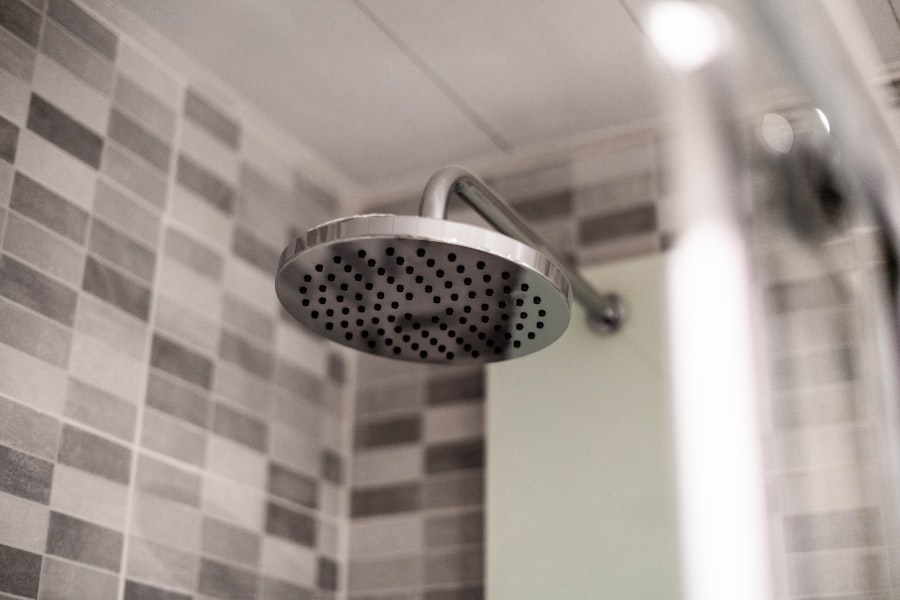In recent years, the landscape of online shopping has undergone a significant transformation, largely driven by advancements in technology. Among these innovations, augmented reality (AR) has emerged as a game-changer, offering consumers an immersive shopping experience that bridges the gap between the digital and physical worlds. By overlaying digital information onto the real environment, AR allows shoppers to visualize products in their own space, enhancing their decision-making process.
This technology not only enriches the online shopping experience but also addresses some of the inherent limitations of traditional e-commerce, such as the inability to physically interact with products before purchase. As consumers increasingly seek convenience and personalization in their shopping experiences, augmented reality has positioned itself as a vital tool for retailers aiming to meet these demands. The integration of AR into online shopping platforms has opened up new avenues for engagement, allowing brands to create interactive experiences that captivate and retain customers.
From virtual fitting rooms to 3D product displays, AR is redefining how consumers interact with products, making it easier for them to envision how items will fit into their lives. As we delve deeper into the benefits and implications of augmented reality in online shopping, it becomes clear that this technology is not merely a trend but a fundamental shift in how we approach retail.
Key Takeaways
- Augmented reality (AR) is changing the way people shop online by allowing them to visualize products in their own space before making a purchase.
- The benefits of AR for online shoppers include increased confidence in purchasing decisions, reduced returns, and a more engaging shopping experience.
- AR is revolutionizing the try-before-you-buy experience by enabling customers to virtually try on clothing, accessories, and even furniture in their own environment.
- AR is impacting product visualization and customization by allowing customers to personalize and customize products before making a purchase.
- AR is playing a significant role in reducing returns and improving customer satisfaction by providing a more accurate representation of products and reducing buyer’s remorse.
The Benefits of Augmented Reality for Online Shoppers
One of the most significant advantages of augmented reality in online shopping is its ability to enhance product visualization. Traditional online shopping often leaves consumers guessing about how a product will look or fit in their environment, leading to uncertainty and hesitation. With AR, shoppers can visualize products in real-time, superimposing them onto their surroundings through their smartphones or tablets.
This capability not only provides a clearer understanding of dimensions and aesthetics but also fosters a sense of confidence in purchasing decisions. For instance, when buying furniture, customers can see how a couch would look in their living room, ensuring that it complements their existing decor before making a commitment. Moreover, augmented reality facilitates a more personalized shopping experience.
By allowing users to customize products—whether it’s changing colors, sizes, or styles—AR empowers consumers to make choices that reflect their individual preferences. This level of interactivity not only enhances user engagement but also increases the likelihood of conversion rates. Retailers can leverage AR to create tailored experiences that resonate with their target audience, ultimately driving sales and fostering brand loyalty.
As shoppers become accustomed to these immersive experiences, they are likely to expect similar features from all online retailers, pushing the industry toward greater innovation and customer-centric solutions.
How Augmented Reality is Revolutionizing the Try-Before-You-Buy Experience

The concept of “try-before-you-buy” has long been a staple in brick-and-mortar retail, allowing customers to physically interact with products before making a purchase. Augmented reality is revolutionizing this experience in the online realm by providing virtual alternatives that mimic the tactile engagement of traditional shopping. For example, beauty brands have adopted AR technology to enable customers to virtually try on makeup products using their smartphone cameras.
This not only allows users to experiment with different looks but also eliminates the need for testers that can often be unsanitary or unavailable in stores. In addition to beauty products, AR is making waves in fashion retail as well. Virtual fitting rooms allow customers to see how clothing items would look on them without ever stepping foot in a store.
By using body scanning technology and AR overlays, shoppers can visualize how garments fit their unique body shapes and sizes. This innovation not only enhances the shopping experience but also addresses common concerns about fit and style that often lead to abandoned carts. As more retailers adopt these technologies, the traditional barriers of online shopping are being dismantled, paving the way for a more interactive and satisfying consumer journey.
The Impact of Augmented Reality on Product Visualization and Customization
Augmented reality significantly enhances product visualization by providing consumers with a more comprehensive understanding of what they are purchasing. In an era where online shoppers are inundated with choices, AR helps distill options by allowing users to see products in context. For instance, when considering a new piece of art for their home, customers can use AR applications to project the artwork onto their walls, assessing how it complements their existing decor and lighting conditions.
This capability not only aids in decision-making but also reduces the cognitive load associated with visualizing products based solely on static images. Customization is another area where augmented reality shines brightly. Many consumers today crave personalized experiences that reflect their unique tastes and preferences.
AR technology enables shoppers to modify products in real-time—changing colors, materials, or even features—before making a purchase. For example, furniture retailers can offer AR tools that allow customers to visualize different fabric options on a sofa or adjust the dimensions of a table to fit their space perfectly. This level of customization not only enhances customer satisfaction but also fosters a deeper emotional connection between consumers and brands, as shoppers feel more invested in products that they have tailored to their liking.
Augmented Reality’s Role in Reducing Returns and Improving Customer Satisfaction
One of the most pressing challenges faced by online retailers is the high rate of product returns, often stemming from discrepancies between customer expectations and actual product performance. Augmented reality plays a crucial role in mitigating this issue by providing consumers with a more accurate representation of products before they make a purchase. By allowing shoppers to visualize items in their own environments or try them on virtually, AR significantly reduces the likelihood of dissatisfaction upon delivery.
This not only leads to fewer returns but also saves retailers time and resources associated with processing returns and restocking items. Furthermore, the enhanced shopping experience facilitated by augmented reality contributes directly to improved customer satisfaction. When consumers feel confident about their purchases—thanks to realistic visualizations and interactive features—they are more likely to have positive experiences with brands.
This satisfaction can translate into repeat business and positive word-of-mouth referrals, which are invaluable for any retailer looking to thrive in a competitive market. As AR technology continues to evolve and become more accessible, its potential to reshape customer experiences and drive loyalty will only grow stronger.
The Future of Augmented Reality in Online Shopping

Looking ahead, the future of augmented reality in online shopping appears bright and full of potential. As technology continues to advance, we can expect even more sophisticated AR applications that enhance user experiences across various sectors of e-commerce. Innovations such as artificial intelligence integration could further personalize AR experiences by analyzing consumer behavior and preferences in real-time.
This would allow retailers to offer tailored recommendations based on individual shopping habits, creating an even more engaging and relevant experience for users. Moreover, as AR hardware becomes more affordable and widely adopted—think smart glasses or advanced mobile devices—the barriers to entry for both consumers and retailers will diminish. This democratization of technology will likely lead to an explosion of creative applications within e-commerce, from virtual showrooms that allow customers to explore entire collections in 3D environments to interactive advertisements that engage users in novel ways.
As augmented reality continues to evolve, it will undoubtedly play an integral role in shaping the future of online shopping, making it more immersive, personalized, and enjoyable than ever before.
Examples of Successful Implementation of Augmented Reality in E-commerce
Several brands have already begun harnessing the power of augmented reality to enhance their online shopping experiences successfully. One notable example is IKEA’s “IKEA Place” app, which allows users to visualize how furniture items will look in their homes before making a purchase. By using AR technology, customers can place 3D models of furniture in their living spaces through their smartphones, helping them make informed decisions about size and style compatibility.
This innovative approach has not only improved customer satisfaction but has also reduced return rates significantly. Another compelling case is that of Sephora’s Virtual Artist feature, which enables users to try on makeup virtually using their device’s camera. Customers can experiment with different shades of lipstick or eyeshadow without ever needing to visit a physical store or use testers.
This interactive experience has proven particularly appealing during times when health concerns have made traditional shopping less desirable. By embracing augmented reality, Sephora has successfully engaged its audience while providing a safe and convenient way for customers to explore new products. In conclusion, augmented reality is poised to redefine the online shopping experience by enhancing product visualization, personalization, and customer satisfaction while reducing return rates.
As this technology continues to evolve and integrate into e-commerce platforms, it promises an exciting future for both retailers and consumers alike. The successful implementation of AR by leading brands serves as a testament to its potential impact on the retail landscape, paving the way for innovative solutions that cater to the ever-changing needs of modern shoppers.
For those interested in understanding how technological advancements are reshaping the retail landscape, particularly through online platforms, you might find the article on Top Trends in E-Commerce Business highly relevant. This article explores various innovations that are currently shaping the e-commerce industry, including the integration of augmented reality (AR) into online shopping experiences. It provides insights into how AR and other digital tools are not only enhancing user engagement but also improving the overall customer shopping journey by allowing consumers to visualize products in a more interactive and realistic manner.
FAQs
What is augmented reality (AR)?
Augmented reality (AR) is a technology that superimposes computer-generated images, information, or sensory inputs such as sound, video, or GPS data onto a user’s view of the real world.
How is augmented reality being used in online shopping?
Augmented reality is being used in online shopping to enhance the customer experience by allowing users to virtually try on clothing and accessories, visualize furniture and home decor in their own space, and see how products will look in real life before making a purchase.
What are the benefits of using augmented reality in online shopping?
The benefits of using augmented reality in online shopping include increased customer engagement, reduced product returns, improved customer satisfaction, and a more immersive and interactive shopping experience.
What are some examples of augmented reality in online shopping?
Examples of augmented reality in online shopping include virtual fitting rooms for trying on clothing and accessories, AR-powered furniture placement tools for visualizing how items will look in a room, and AR apps for previewing products in 3D before purchasing.
How does augmented reality enhance the online shopping experience?
Augmented reality enhances the online shopping experience by providing a more interactive and personalized way for customers to engage with products, make more informed purchasing decisions, and ultimately feel more confident about their online shopping choices.

